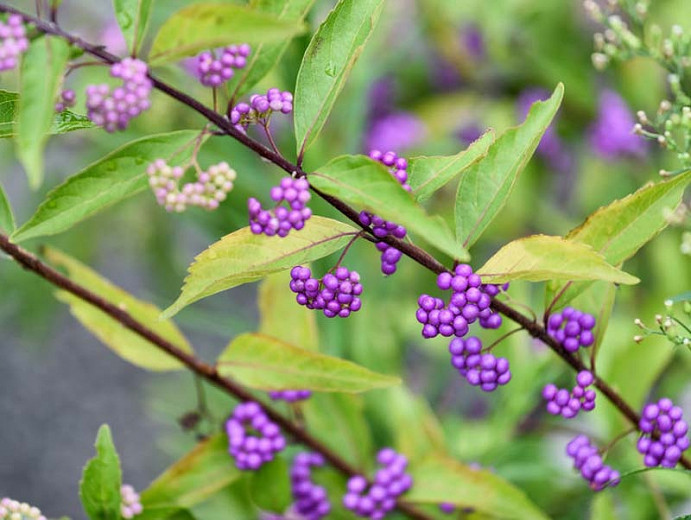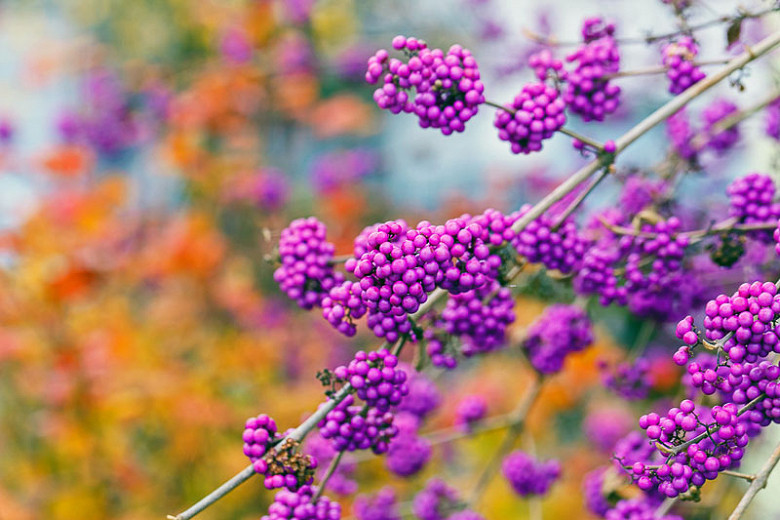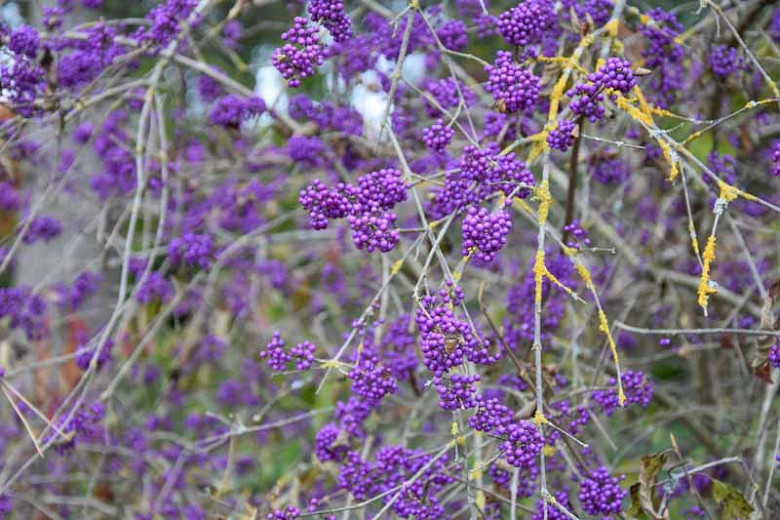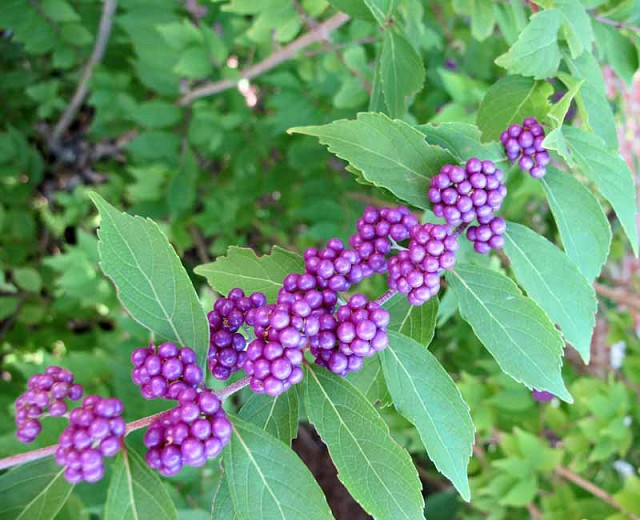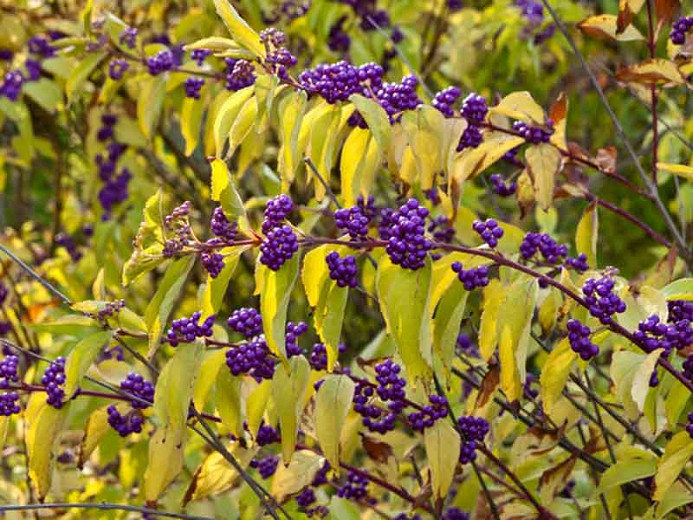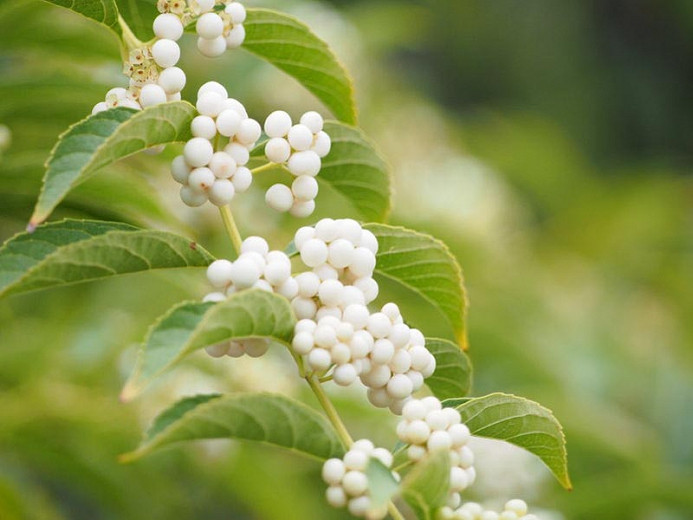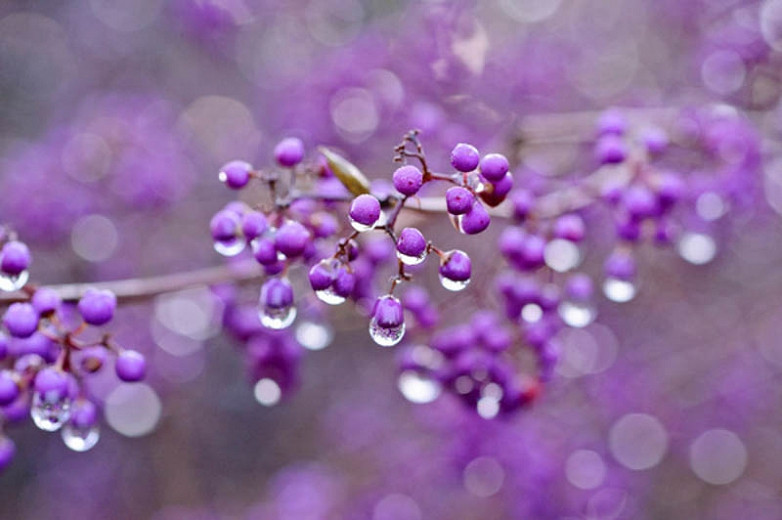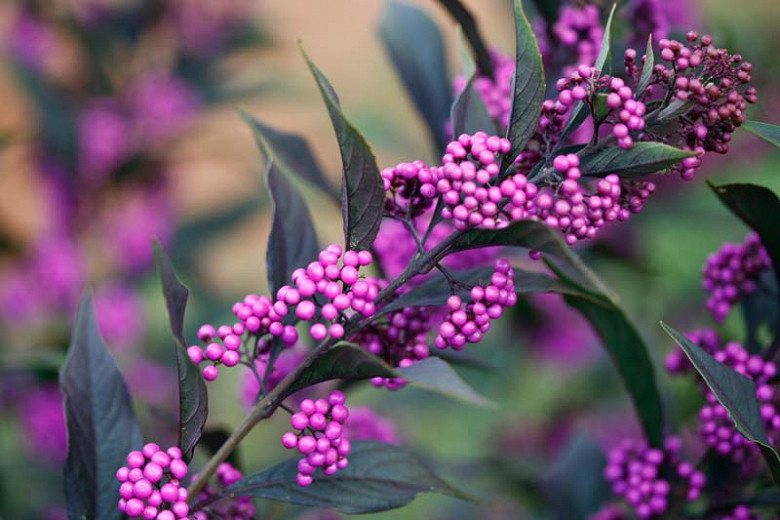Callicarpa dichotoma Early Amethyst (Purple Beautyberry)
Callicarpa dichotoma ‘Early Amethyst’ (Purple Beautyberry) is a small, compact, rounded, deciduous shrub, primarily grown for its eye-catching display of shiny purple berries from late summer through fall. In summer, it bears clusters of small lavender flowers along its elegantly arching stems. Attractive to bees and butterflies, they are abundantly followed by clusters of glossy, bright amethyst fruits in late summer, which persist after the leaves have fallen and stand out beautifully.
Callicarpa dichotoma 'Early Amethyst' (Purple Beautyberry) is a small, compact, rounded, deciduous shrub, primarily grown for its eye-catching display of shiny purple berries from late summer through fall. In summer, it bears clusters of small lavender flowers along its elegantly arching stems. Attractive to bees and butterflies, they are abundantly followed by clusters of glossy, bright amethyst fruits in late summer, which persist after the leaves have fallen and stand out beautifully. This cultivar is noted for its fruits that ripen well before other Beautyberries. Adding rich color to the landscape, they make a lovely contrast with the foliage of elliptic green leaves. Easy to grow.
- Grows up to 3-4 ft. tall (90-120 cm) and 4-5 ft. wide (120-150 cm).
- A full sun to part shade lover, this plant is best grown in average, medium, well-drained soils. Best flowering and fruit production occurs in full sun. May become leggy in too much shade. Fairly adaptable to different soil types, but fertile soil with good drainage is preferred. Some drought tolerance.
- Easy to grow and low maintenance, this plant is affected by very few pests and diseases. It is also rarely bothered by deer
- Mass in mixed shrub borders, containers, foundation plantings. Perfect also as specimen plant or deciduous hedge or screen. Best fruit production occurs when these Beautyberry shrubs are planted in groups or massed (better cross-pollination).
- Blooms on new growth. Prune stems back to 6 in. (15 cm) in late winter to early spring to encourage compactness and flowering
- Callicarpa dichotoma species is invasive in Alabama. As an alternative, use Callicarpa americana (American Beautyberry)
- Callicarpa dichotoma species is native to China, Japan, Korea.
Requirements
| Hardiness | 5 – 8 |
|---|---|
| Heat Zones | 7 – 8 |
| Climate Zones | 2, 2B, 3, 3A, 3B, 4, 5, 6, 7, 8, 9, 14, 15, 16, 17, 18, 19, 20, 21, 22, 23, 24 |
| Plant Type | Shrubs |
| Plant Family | Callicarpa – Beautyberries |
| Exposure | Full Sun, Partial Sun |
| Season of Interest | Summer (Early,Mid,Late)Fall |
| Height | 3' – 4' (90cm – 120cm) |
| Spread | 4' – 5' (120cm – 150cm) |
| Spacing | 48″ – 60″ (120cm – 150cm) |
| Water Needs | Average |
| Maintenance | Low |
| Soil Type | Clay, Loam, Sand |
| Soil pH | Acid, Neutral |
| Soil Drainage | Well-Drained |
| Characteristics | Showy, Fruit & Berries |
| Tolerance | Deer |
| Attracts | Bees, Birds, Butterflies |
| Garden Uses | Beds and Borders, Hedges and Screens, Patio and Containers |
| Garden Styles | Informal and Cottage |
